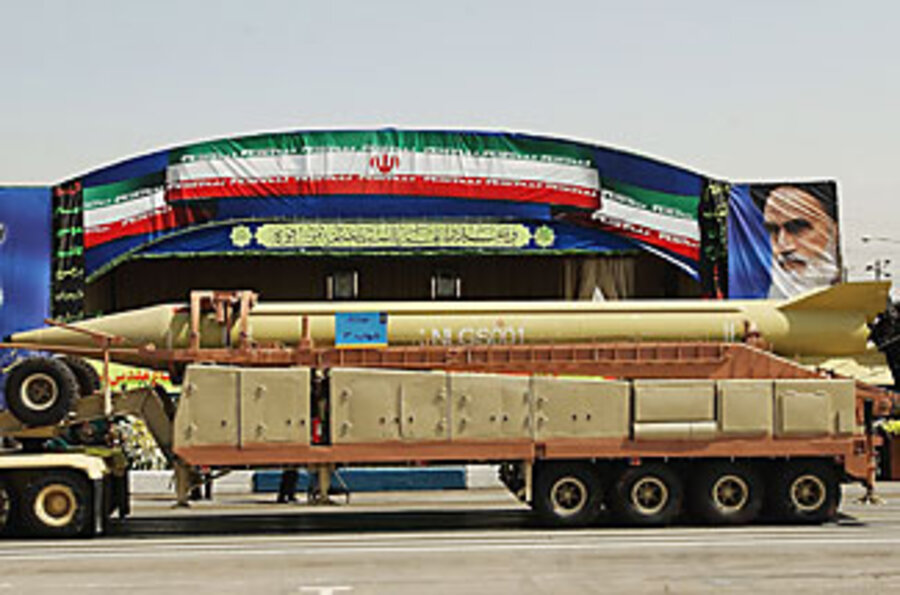Missiles in Iran that still worry Obama and the West
Loading...
Iran's surging short- and medium-range ballistic missile program is a big factor behind President Obama's reconfiguration of the proposed US antiballistic missile shield in Eastern Europe.
Iranian scientists have made more progress than the Pentagon had anticipated toward developing workable weapons capable of hitting targets in Israel and Europe. So Mr. Obama opted for the deployment by 2011 of Navy ship-based antimissile systems that he says are more flexible and better able to counter this new threat.
In announcing this change, Defense Secretary Robert Gates mentioned one Iranian missile by name: the Shahab-3. Here is what is known about this and other shorter-range Iranian missiles.
Shahab-3. "Shahab" means "meteor" or "shooting star," in Farsi. A series of Iranian missile variants carry the Shahab designation. The Shahab-3 is a single-stage, liquid-fueled medium-range ballistic missile with a range of about 800 miles, or close to 1,300 kilometers (km).
The heavier the warhead carried by the missile, the shorter the distance the Shahab-3 can fly. With a substantial 1,000-kilogram warhead, it would be able to travel only 930 km, according to a recent EastWest Institute assessment of Iranian missile potential.
The Shahab-3 is mounted on and launched by special trucks, making it a road-mobile weapon. It has been officially in service with the Iranian military since 2003, although US analysts believe only 20 or so launchers have been deployed.
This missile is a direct descendent of North Korea's NoDong IRBM, which in turn was developed by the North Koreans with help from Soviet technicians during the USSR's last years.
Its first flight test in Iran was July 22, 1998. It exploded after 100 seconds in the air. Subsequent flights have been more successful, but technical problems have persisted. In February 1998, US experts noted a small section of debris exploding away from a Shahab-3 during a test. They concluded it was a jet vane, a fin that sits inside the engine exhaust and helps steer the missile.
Jet vanes must be made from very pure graphite and are among the more difficult parts of a ballistic missile to produce.
Iran has continued to stretch propellent tanks within the Shahab-3 in an effort to produce a more powerful and longer-range missile. But that process has essentially gone as far as it can go, according to the EastWest Institute.
"Further advances in Iran's ability to produce rockets of greater range and payload will require new and major technological advances beyond those it has so far demonstrated," concludes the institute analysis.
Sejil-2. "Sejil," or "Sajjil," means "baked clay," in Farsi. The Sejil-2 is a new two-stage, solid-fueled rocket successfully test-fired only last year by Iran. It may represent the sort of technological advance that the EastWest Institute judged would be needed to increase Iranian missile capability.
The Sejil's range is longer than that of the Shahab-3, at an estimated 2,000 km. In addition, its solid propellent has a number of advantages over the Shahab's liquid fuel. Solid-fuel rockets accelerate faster – making them perhaps less prone to being shot down in their vulnerable boost phase by defensive systems. More important, solid-fuel missiles are easier to handle and can be fired more quickly. They lend themselves to storage in hidden silos or mountain redoubts.
Unlike the Shahab series and most other Iranian missiles, the Sejil bears no outward resemblance to foreign missile types. It might thus represent the rise of an indigenous production capability, in tandem with Iran's more traditional development process, which has relied on foreign technical aid.
----
Follow us on Twitter





